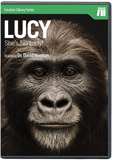
These Bones Were Made for Swingin’
Evolutionists claim Lucy (discovered in 1974) is a fossilized ancestor of people, but the bones resemble an ape-like creature's skeleton more than any human's.
Since the famous ape skeleton dubbed Lucy was discovered in 1974, researchers have debated how much time she spent in trees. It’s an important question since evolutionary paleontologists believe Lucy is an ancestor of modern humans. They believe the shape of her big toe, in particular, is strong evidence that she walked upright on two feet. And the more time Lucy spent walking, rather than climbing trees, the closer seems her connection to humanity.
But recent findings seem to indicate that the many tree-climbing aspects of Lucy’s anatomy, such as her long arms, curved fingers, and upward-angled shoulder blades, are not simply leftovers from a chimp-like evolutionary past. Using high-resolution CT scans of the skeleton, a team of researchers in Texas has concluded that Lucy probably died from falling out of a tree. The fractures in her bones appear consistent with a fall, not trampling or burial of her bones under heavy material in the years since her death. And since Lucy lived on the level plains of Africa, the only place she could have fallen from would be a tree.
That’s not unreasonable, even if Lucy was a walker, since she’d still need to sleep in the trees for safety from predators. However, another discovery adds weight to the idea of a tree-centered life. Lucy’s thick arm bones show that the relative strength of her arms compared to her legs is more like that of a chimpanzee than a human. She must have spent a lot of time climbing and swinging to develop such strong arms.

Reconstruction of the Lucy fossil from a creationist perspective, courtesy of the Creation Museum
Neither discovery is likely to end the debate about how much Lucy truly walked. Evolutionary researchers are too committed to a human-like ape to let Lucy go so easily.
Her bones aren’t a concern to biblical creationists. Genesis assures us that God created apes and humans separately on Day Six of Creation Week. So whether an ape preferred to waddle on the plains or to swing from branch to branch (and the evidence seems to lean heavily toward the latter), she did not swing in humanity’s family tree.

Piecing Together a Human-Like Ape
What did the fossil creature known as Lucy, claimed to be an ape-human intermediate, look like when alive? The problem is that the longer bones are fragmented. If a scientist believes Lucy was a link between apes and humans, he could close the gaps between her arm bones and lengthen the gaps between her leg bones to give her human-like proportions. But the bones fit together just as well with ape proportions.
- Lucy’s arm bones are broken and pieces are missing, so the original length is not immediately clear. If you compare the taper of the bones, the middle section appears to be missing. This could indicate that she had long, ape-like arms (seen above). Evolutionists do not allow much space for missing pieces between the bones and give Lucy shorter human-like arms.
- Lucy’s leg bones are also fragmented, so there is some leeway in estimating the original length. The bones would fit together just fine with short ape-like legs (seen above). Evolutionists have added as much as half a foot (15 cm) into the gaps, producing long, human-like legs.
Related Videos
Lucy—She's No Lady! Excerpt
Answers Magazine
March–April 2017
How do we see our Creator in the kitchen? The infinite diversity of delicious food shows His lavish love.
Browse Issue SubscribeRecommended Resources

Answers in Genesis is an apologetics ministry, dedicated to helping Christians defend their faith and proclaim the good news of Jesus Christ.
- Customer Service 800.778.3390
- © 2024 Answers in Genesis






